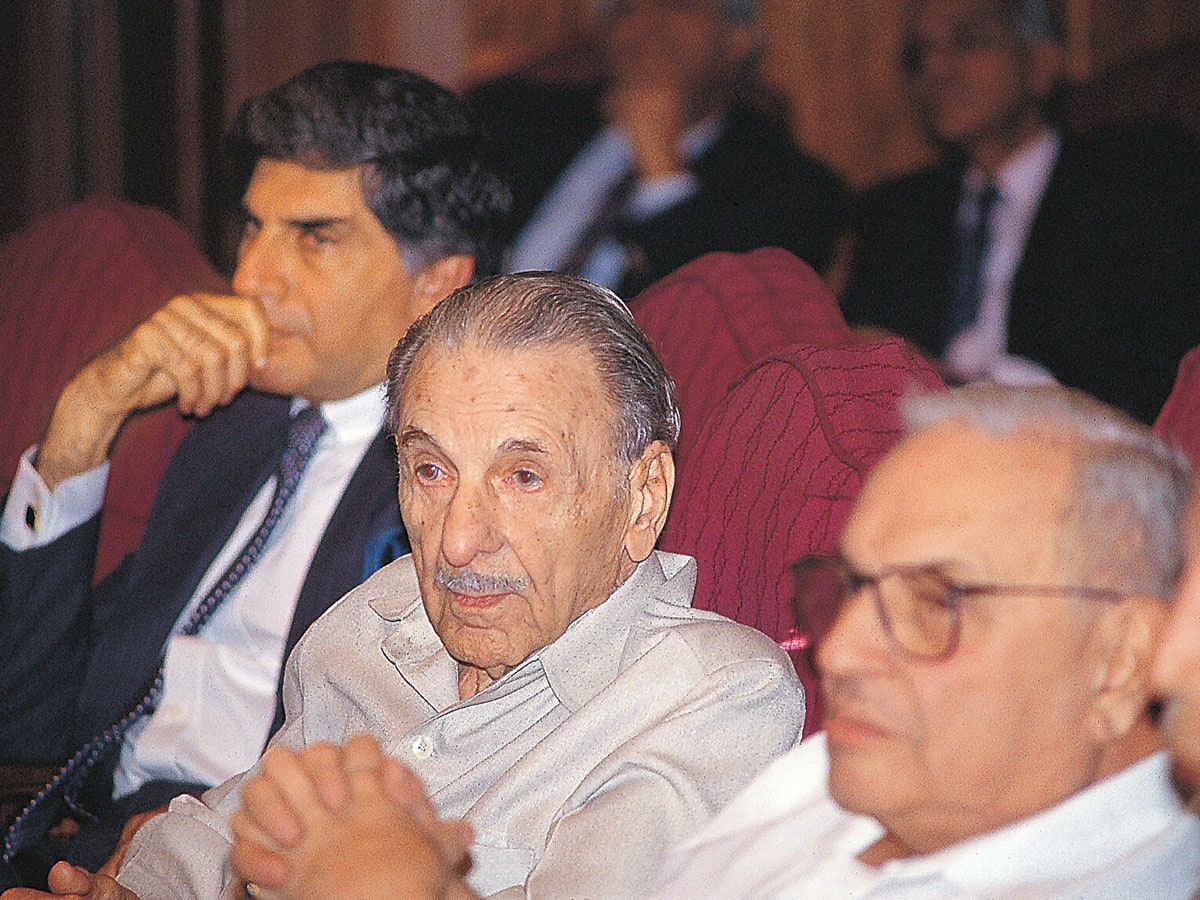
The RNT Legacy: From radios to semiconductors, high technology was his buzzword
Ratan Naval Tata injected into the conglomerate the spirit of tech innovation in an era of locomotives and heavy vehicles
 JRD Tata Along with Ratan Tata and Russi Modi at the meeting in New Delhi, India
Image: Hemant Pithwa/The The India Today Group via Getty Images
JRD Tata Along with Ratan Tata and Russi Modi at the meeting in New Delhi, India
Image: Hemant Pithwa/The The India Today Group via Getty Images
The Indian government’s go-ahead to Tata Electronics earlier this year to build a mega semiconductor fabrication facility in Dholera in Gujarat in partnership with Taiwan’s PSMC is in many ways Ratan Naval Tata’s (RNT) crowning glory in the universe of technology and innovation. Technology today is at the forefront of the 30-company conglomerate operating in 10 verticals, with IT services bellwether TCS leading the charge.
Within the tech vertical, there’s also Tata Technologies that got listed on the Indian stock exchanges last November and is at the vanguard of engineering next generation connected and autonomous electric vehicles. And then there’s Tata Electronics, a greenfield venture founded in 2017, to manufacture precision components, which will execute the $11 billion (a little over Rs91,000 crore) semiconductor project.
RNT, who studied structural engineering and architecture at Cornell University in the United States, almost took up an offer from IBM when he returned to India in the early 60s. Tata Sons Chairman JRD Tata convinced him to join the Tata group instead. After stints with Tata Motors (then known as Telco) and Tata Steel (then Tisco), RNT did a short spell at the two-year-young TCS in 1970.
The first up-close tryst with leadership and technology came a year later when RNT was appointed director of National Radio and Electronics, or Nelco, then an ailing maker of engineering products like radios and radio components, among many others. RNT did show his turnaround skills in the four years spent there, but more important was the experience garnered at a company that today operates in the areas of VSAT connectivity, satcom projects and integrated security & surveillance systems.
Also read: Ratan Naval Tata: Legend Through The Years


















